Using Apocalypse World to Outline and Draft Your Own RPG
Here in Part 9, I lay some groundwork for the idea of underlying models by pointing out a crucial feature of Apocalypse World.
This article was made possible by the generous support of my patrons. Please consider joining them by supporting me on Patreon.
Normal RPGs
A normal roleplaying game models objects and entities in the game world. Sometimes in significant detail.
For example: Here’s my dude with his friends. My dude’s the one in the middle, he’s 3 strong, he’s 2 skilled. He owns an axe that’s 3 sharp and a shield that’s 4 hard. Altogether he has 12 points.
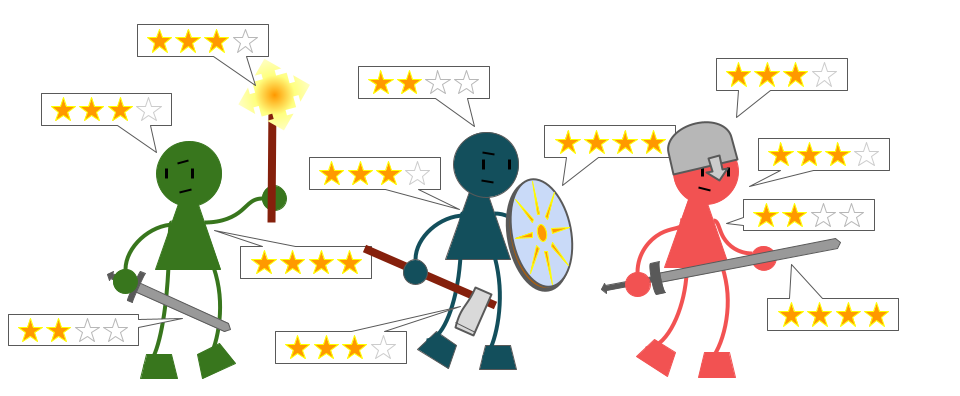
Most of the actions that a normal rpg models are comparisons between these objects and entities, along the requisite axes. They use some combination of number crunching and odds playing — dice rolls — to determine whether, this time, x-much is effectively more or less than y-much.
For example: Here’s my dude, he’s 3 strong and 2 skilled. Here’s a cliff, it’s 7 steep. Ready… Set… COMPARE!
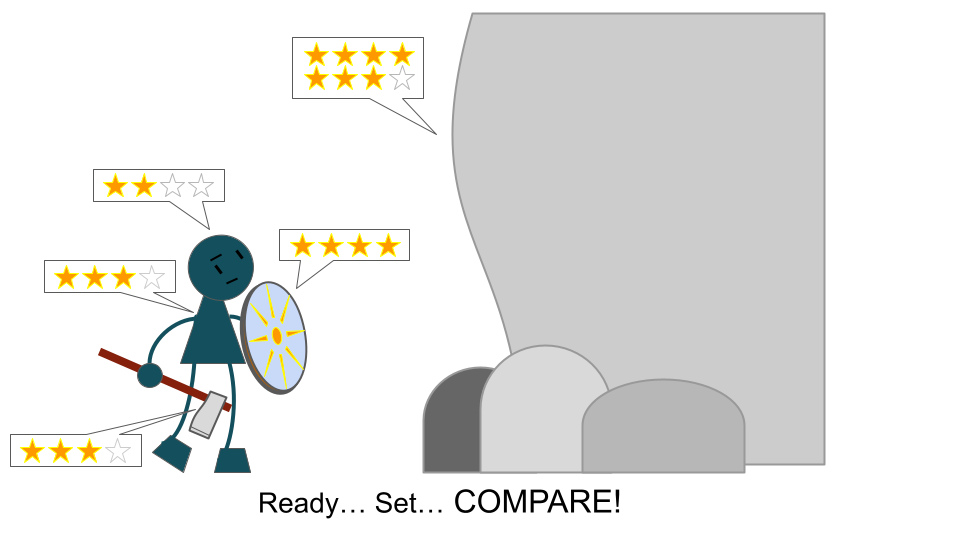
I roll my dice, add up my results, get the target number from the GM. Let’s say that, all that done, the result is that the cliff is too steep for my dude to climb.
This gives us the old binary succeed/fail.
For outcomes beyond succeed/fail, normal rpgs mostly handle it by simply improving or degrading the objects and entities they model, along the same axes they use for comparison.
For example: Here’s my dude, he’s 3 strong and 2 skilled, with his 3-sharp axe and his 4-hard shield. Here’s an enemy warrior, who is a total of 14 dangerous, with two 2-sharp swords, 4-hard armor, 3 strength, and 3 skill. Ready… Set… COMPARE!
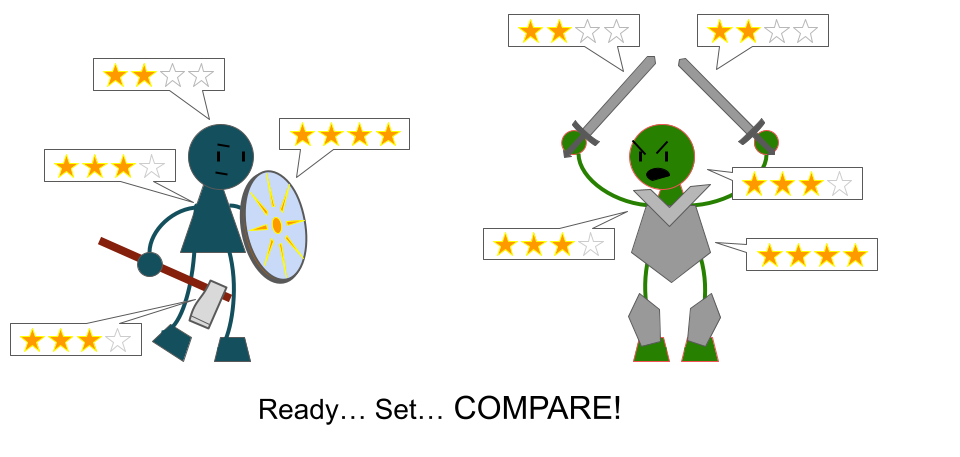
Let’s say that after the dice rolls and everything, the result is, the enemy warrior degrades my dude, to the tune -2 to his strength and -2 to his shield.
Here’s my dude before and after his run-in with the enemy warrior:
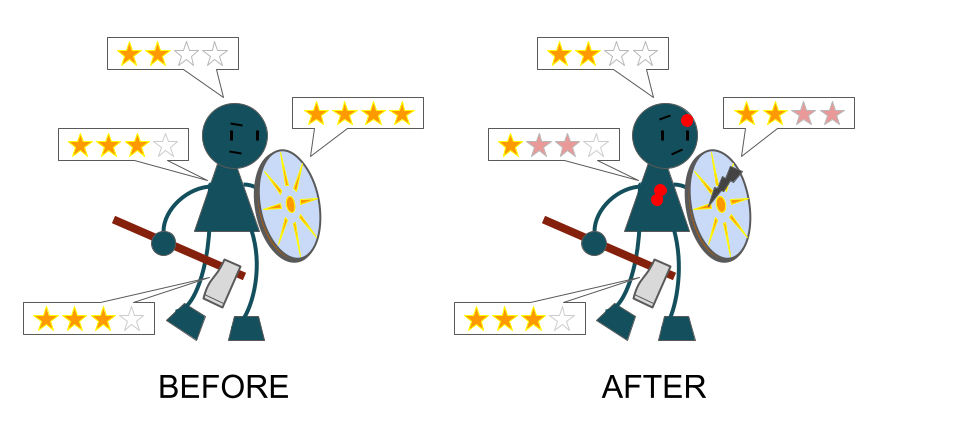
In sum:
A normal rpg describes objects and entities in some detail. It works by comparing their qualities, relatively statically. It accumulates outcomes to their basic detriment and benefit, along those same axes of comparison.
Apocalypse World
Apocalypse World made its bid for an alternative model.
It describes actions in more detail than items and entities. It still models items and entities, but relatively simply, mainly as the subjects and objects of action.
Here’s my driver. She can make all the basic moves, and she has a suite of her own moves that she can make more or less uniquely. She owns a car, which lets her make some additional moves, and a crowbar, with which she can do violence in some ways but not others.
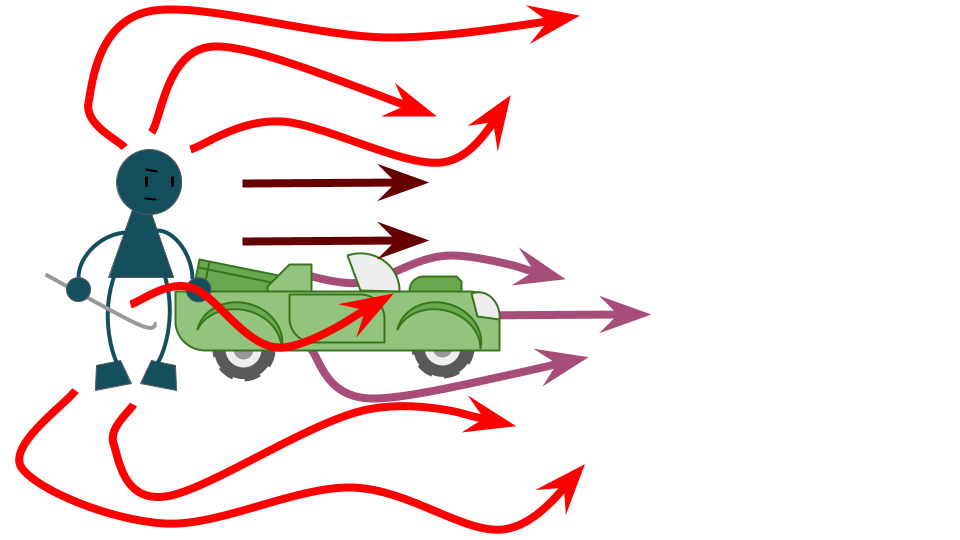
Apocalypse World only rarely compares characters. When it does, it’s indirect: when we both seize something by force, for instance, we don’t compare our characters’ strengths or weaknesses. Instead, we roll our dice independently, we each make our own choices, and we find out together: what are the combined effects of our actions?
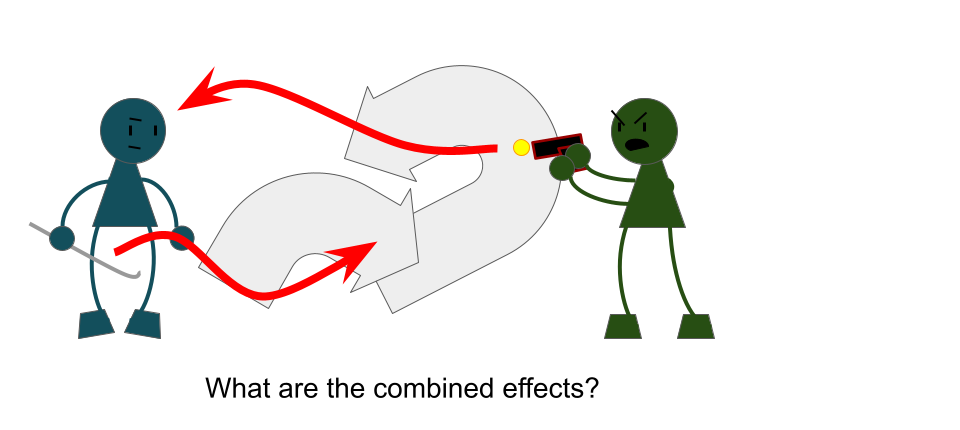
Apocalypse World still tracks some outcomes to the detriment and benefit of the items and entities, but it also asserts outcomes more directly into the action of the game.
For instance, Apocalypse World says that dismaying your enemy, or seizing definite hold of something, is as valuable and as real an outcome as degrading your enemy’s hit points. The game’s action, it says, must continue from this new, changed situation.
Who’s lying bleeding? Who’s in pain? Who’s still holding a gun? Who’s shocked by the suddenness of the violence and dismayed by the urgency of the fallout? What do you do now?
In sum:
In Apocalypse World, more than statting up the characters in the game, you stat up the actions they take!
So What?
Now, this is all fine: two models, somewhat overlapping, somewhat different, in ways interchangeable or translatable into each other, each offering its own angle on the problems of rpg design. So what?
So what, is: if you’re playing a game for the fiction it creates — a big if! — but if you are, these two models also represent two different approaches to analyzing and synthesizing fiction.
A normal rpg conceives fiction in terms of characters with qualities you can compare, to their advantage and disadvantage. Apocalypse World conceives fiction in terms of characters who do things. Like this:
Thanks, everyone!
If you have any questions, I love to answer them. Hit me up, it’ll be my pleasure.
If this article looks familiar, it’s because it’s expanded from a thread on twitter from like 2019. You probably saw it there!
Past Installments:
- Back in Part 1, I laid out Apocalypse World’s philosophy and foundation, described the fit and purpose of its systems, and talked about which features are central to its workings and which aren’t.
- Then in Part 2, I walked through the beginnings of taking Apocalypse World’s parts and using them as the basis for a whole new game.
- In Part 3, I dived back into Apocalypse World’s basic moves. I went through them one by one to talk about how and why they work the way they do.
- In Part 4, I talked about playbooks, by request. What are they, do you want them in your game, and what are the alternatives?
- In Part 5, I took a quick aside to talk about some different ways that moves can fit into the conversation of play.
- In Part 6, I used an Ursula K. LeGuin quote — you probably already know the one! — as an outline for alternative models to Apocalypse World’s model of conflict.
- Part 7’s a good old-fashioned Q&A, in rounds: Round 1, Round 2, Round 3 (the lightning round!), & Q&A Round 4 (the Final Round!)
- In Part 8, I shared my six best, most reliable tricks for drafting interesting moves.
Next Installments:
- In Part 10, I develop the idea of underlying models further, with 2 solid examples and 1 tentative one.
- In Part 11, I explore a few of the dice systems we’ve used in our PbtA games.
- In Part 12, I point out a detail in Apocalypse World’s playbook moves that you might have missed.
Reminder: The Goal is to Create a Playable Outline
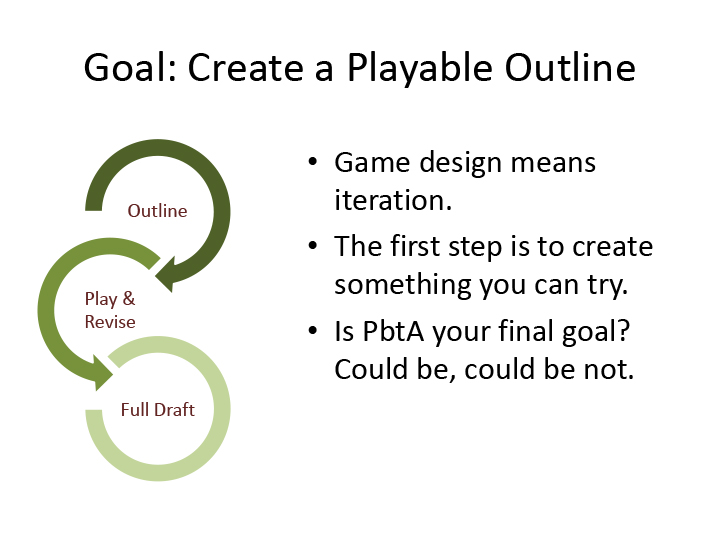

Christopher Barney says:
As a game design prof. I think down these paths a lot… as a GM as well I guess. Teaching games I talk about ‘formal and functional’ elements of design. The nouns and verbs. Sword or Slashing… Platform or Jumping. I’m getting ready to teach a course on Mechanics and Systems design this Fall and considering how to bring some kind or order to the giant pile of mechanics, do I look at them from the perspective of the verbs that can act on a noun, or order them by the nouns that can be affected by a verb. I’ve been thinking about all that mainly from the perspective of digital games, or physical rule-based games (board games, old-school TTRPGs), or physical action games (sports). Paying attention to AW (and to be fair to Monte Cook’s Invisible Sun) has me thinking about the place of players. They are the impetus for deciding when the verbs get used and on what nouns. Perhaps they are just creating gameplay, or perhaps they are ordering action to create a story… but either way, the player’s intent and the degree to which it is enabled by the nouns and verbs of any game defines the experience. But we have very little thought and language around how that actually happens during play. I mean a bit in Game Theory, but that is focused on the mechanical outcome… *sigh* I think that AW moves are maybe an answer in this direction, they are named for the player’s intent in taking them rather than for the exact noun or verb they are acting on…
Theory review #120 – ropeblogi says:
[…] Powered by the apocalypse, part 9: That’s what’s happening by Vincent Baker presents Apocalypse world as different from normal roleplaying games in that it focuses on actions rather than descriptions of characters or items. https://lumpley.games/2023/07/17/powered-by-the-apocalypse-part-9-thats-whats-happening/ […]
Jay Carter III (@Lrd3rd) says:
I just binged all 9 (current) installments of this series of articles and I have to say I feel like I’ve taken a whole course on game design. Vincent, your perspective is insightful, valuable, and relevant to aspiring game designers like myself. You’ve rolled a 10+, my sir. Thank you, and looking forward to installment #10 and beyond.
Clayton says:
I’m just now finding this series, and I love it. I’ll have to delve into the earlier installments.
The framing of Powered by the Apocalypse as focusing on character action instead of character attributes is very elegant. It has a tidiness I can wrap my head around.